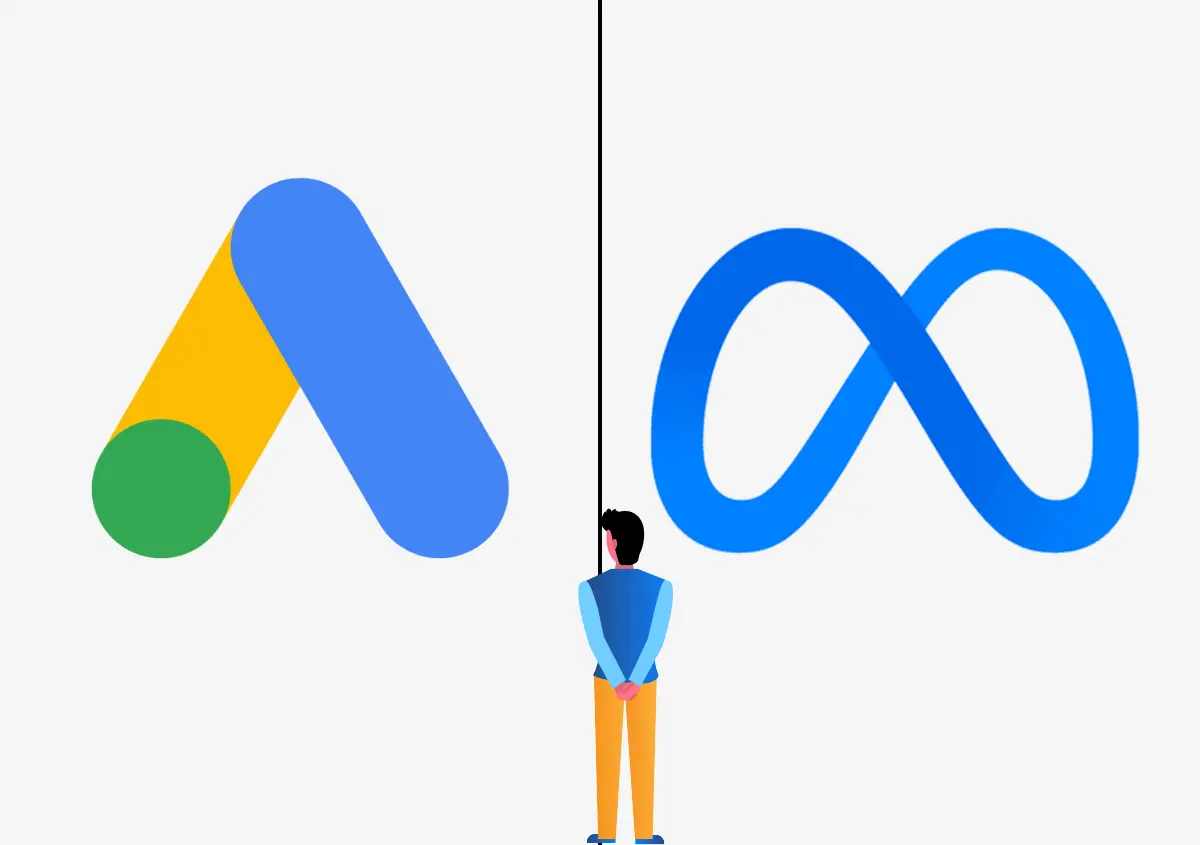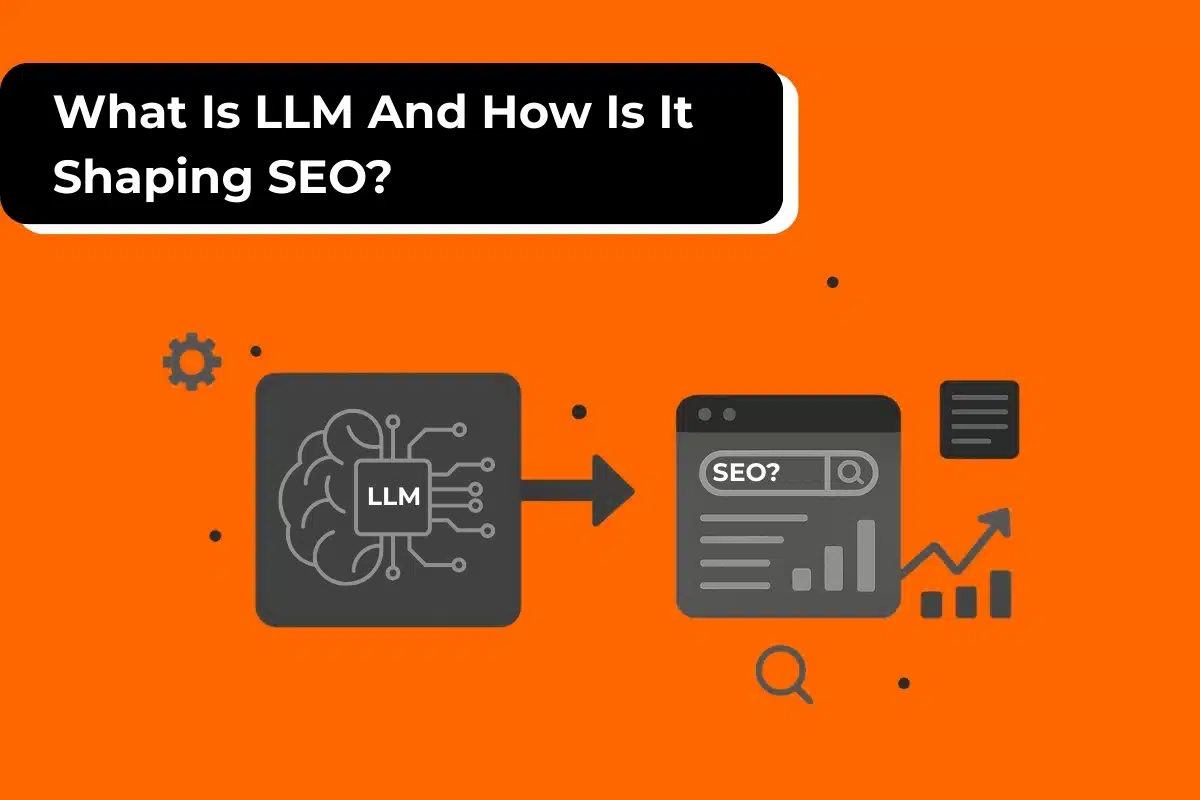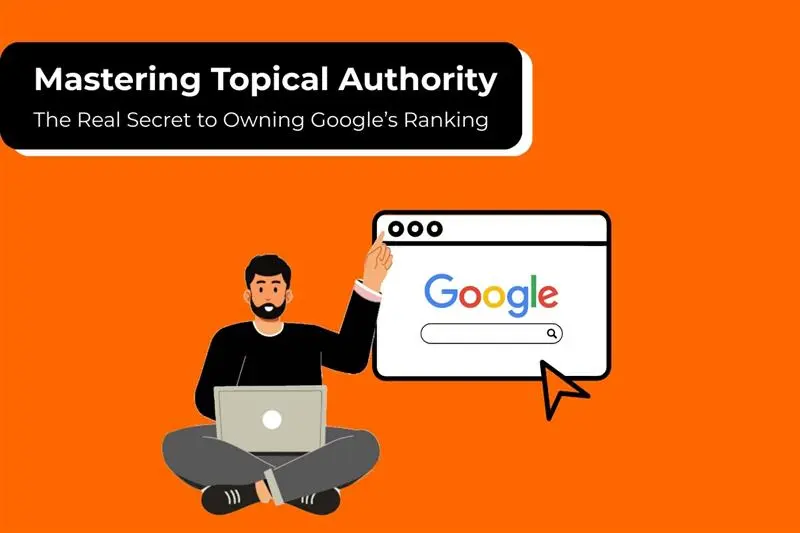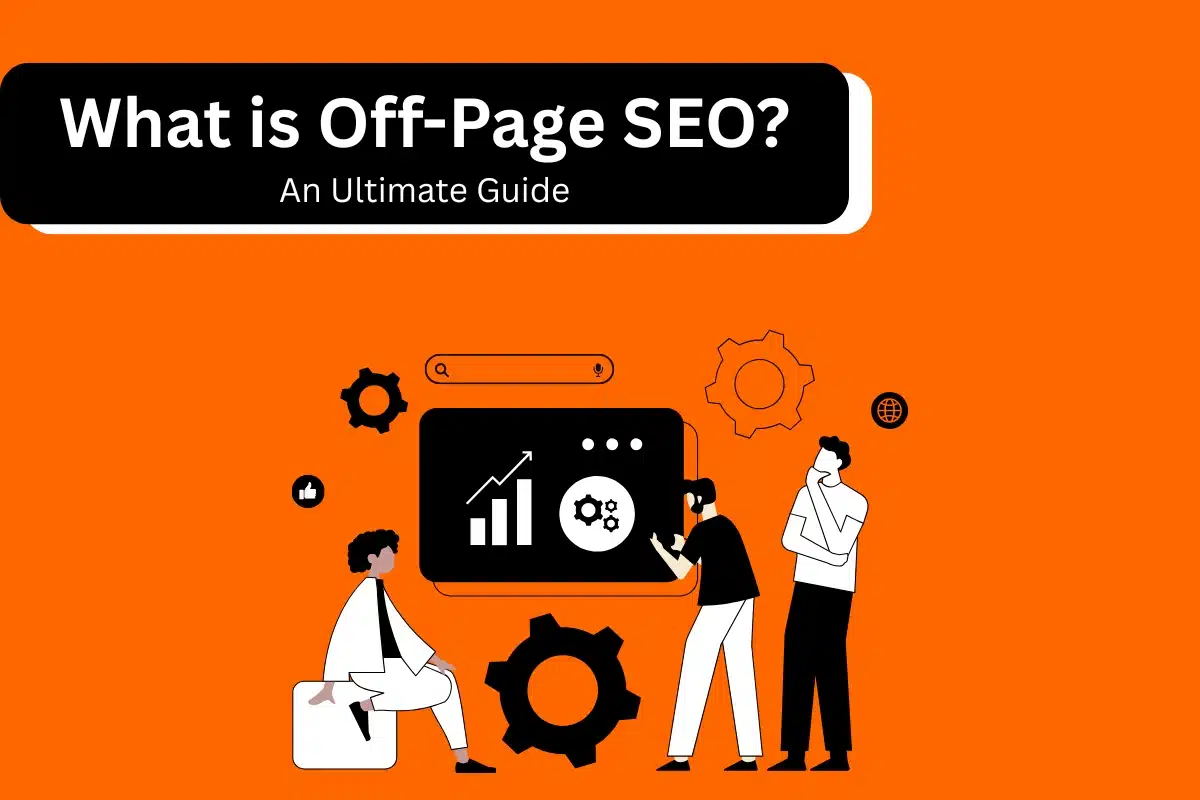For digital advertising, consideration campaigns target leads who have visited a company’s website or social media account in the past. The goal is to persuade leads to take a specific action, such as purchasing a product or filling out a form.
The duration to run a consideration campaign is influenced by many factors; thus, when it comes to Meta and Google, these factors include target audience, goals, and campaign budget.
Generally, consideration campaigns should be run for at least several weeks to allow users to use advertising.
Note that the ideal duration may differ between Meta and Google. For example, Meta’s Ad approval time may take two to four weeks, while Google provides more flexibility. Understanding the requirements and specifics of both platforms helps determine the campaign’s duration.
Timeline for Consideration Campaigns on Meta and Google
Meta (Facebook/Instagram) Campaign Ads
- Creation & planning: 1-2 weeks;
- Content creation (ad copy, photos, video): 1-2 weeks;
- Ad Setup: 1 week;
- Ads review and approval: 2-3 weeks;
- Total duration: 3-5 Weeks
Google Campaign Ads
- Keywords research & planning: 1-2 weeks;
- Ad copy & graphics: 1-2 weeks;
- Campaign setup time: 1 week;
- Testing & Optimization: Ongoing
- Total duration: 3-5 weeks
It’s worth noting that Google’s work on submissions can take some time, and being well-prepared can help you avoid time-consuming mistakes.
Creating a Blog Post
- Research and outline post: 1-2 weeks;
- Writing: 1-2 Weeks;
- Proofreading & edit: 1 week;
- SEO optimization for Google: 1 week;
- Total duration: 4-6 weeks
Please note that these are just rough estimates, and the real schedule might differ depending on the size and complexity of your specific campaign and blog post.
Moreover, the ad run usually also means ongoing testing and adjustment, while the size and availability of the post, the resources available, and the frequency of revision can all affect the speed at which blog content is generated.
It’s better to plan ahead to ensure that you have enough time for all necessary procedures and that your campaign aligns with the overall marketing strategy.
Now, let’s see how to run consideration campaigns.
How to Run Consideration Campaign Ads on Meta & Google?
1. Campaign Goals
Google and Meta Ads support different objectives until a consumer decides to buy or leave. The ones with a specific objective are “Brand Awareness” in Meta Ads and “Reach” in Google Ads. Once a potential customer decides to buy, the conversion-centered objective becomes “Conversions” in Meta Ads and “Sales” in Google Ads. There are 3 levels of Ads objectives:
- Awareness
- Consideration
- Conversion
And there are 11 objectives within these 3 levels:
Awareness Objectives
- Brand Awareness
- Reach
Consideration Objectives
- Traffic
- Engagement
- App Installs
- Video Views
- Lead Generation
- Messages
Conversion Objectives
- Conversions
- Catalog Sales
- Store Traffic
2. Choosing the Type of Consideration Campaign
Determine your decision based on considerations such as the campaign’s objective and targeted audience.
For Meta Ads
- Carousel ads will present several photos of one product.
- Video Ads to present a compelling video story.
- Slideshow ads are used to generate dynamic content due to a limited budget.
- Instant Experience Ads for providing potential customers with an immersive experience of your brand.
For Google Ads
- Display Ads to gain brand exposure for a wide audience.
- Video Ads on YouTube to provide engaging content and capture the audience’s attention.
- Search Ads to attract target audience traffic.
- Shopping Ads will put your products at the top of the query results.
3. Finding the Right Audiences
- Conduct thorough market research—ensure you know your target demographic, including their interests, behaviors, and demographics. Only an in-depth understanding of your audience will allow you to develop a successful advertising campaign.
- Use targeting options on advertising platforms—Meta Ads or Google Ads have various targeting options that enable you to reach your audience more effectively.
- Demographic targeting will help you target people of a certain age and gender who you believe are more likely to be interested in your product.
- Interest-based targeting will show your ads to people who have already expressed interest in products or services from your niche, ensuring better ad engagement and customer conversion.
- Use remarketing, an advertising method that targets people who have already interacted with your website or services in some way.
4. Strategically Targeting Ads & Making Use of Targeting Parameters
Meta Ads
- Location Targeting: Target users based on their geographic location—countries, regions, cities—or draw a radius around your business to ensure your ads are displayed to relevant users.
- Interest Targeting: Helps you reach users based on their interests, hobbies, and preferences. You can target users who are interested in topics or do activities related to your products and services.
- Behavior Targeting: This strategy aims to reach users based on their past behaviors, including online activities, engagement with ads, and interaction with content on Meta platforms.
- Demographic Targeting: Target users based on demographic characteristics, including age, gender, education, relationship status, and many others. It will help you make your ads specifically for each type of audience.
- Custom Audiences: Create custom audiences that suit your criteria, including website visitors, email subscribers, and users who have engaged with your content on Meta platforms.
- Language Targeting: Target users who speak certain languages to help ensure your ads are relevant and understandable to your audience.
Google Ads
- Keyword Targeting: Show your ads to the users based on the keywords they type in their search queries. Let users find your ads while actively looking for products or services you offer.
- Location Targeting: Indicate where the ads should appear on the map. You can reach users across a country or select specific regions, cities, or even a few blocks where your target audience lives.
- Device Targeting: Choose devices from which the users will view the campaign. Adjust the bids for the type of devices that the users will likely use for browsing.
- Audience Targeting: Find the users on their demographics, interests, behaviors, and more. Ads include multiple methods like demographics, in-market segments, affinity audiences, and target users based on social media.
- Remarketing: Target the user based on his previous actions on the website or mobile app. Display the ad to the user who has already visited your website and seen your ads a few times but has not converted for some reason.
- Placement Targeting: Show the ad on specific websites or apps, on sites that potential customers already use.
- Time and Day Targeting: Plan the ad launch for a specific time period. Display the ad to users on weekends or evenings when they are more likely to use Google.
5. Making Use of Lookalike Audiences
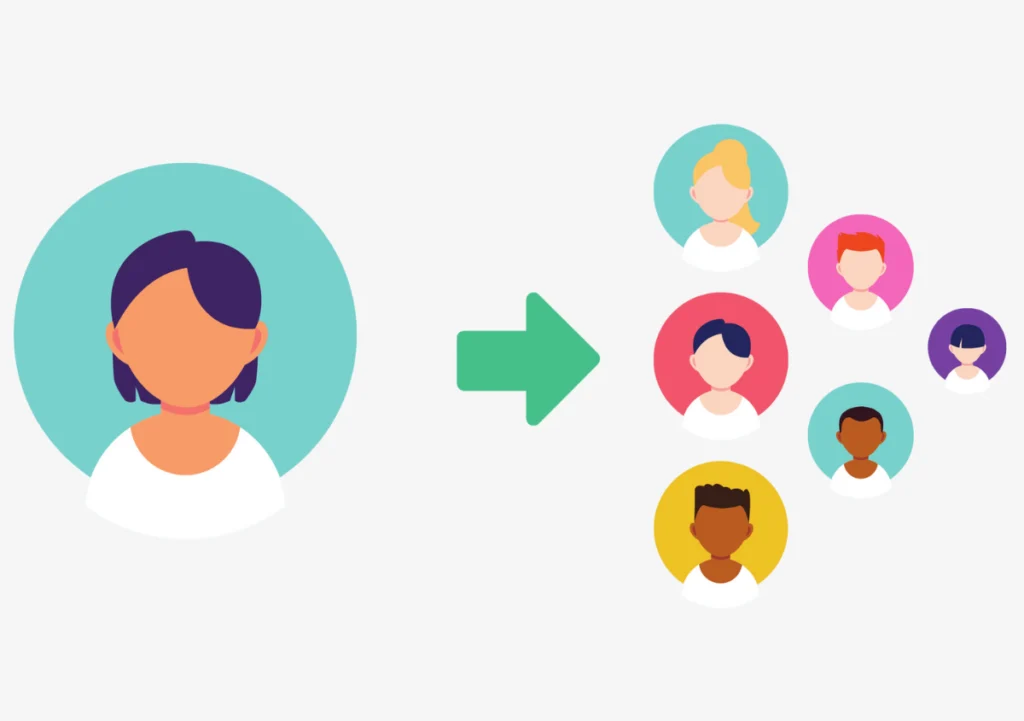
Using lookalike audiences is one of the most potent approaches to pull new possible customers that are similar to your current customer base. You can generate a lookalike audience by uploading lists of existing consumers or website visitors to Meta and Google. As a result, you can look for people with comparable characteristics and interests.
To create productive consideration campaign commercials on Meta and Google, you must target your ads strategically. To ensure the proper target demographics see your ads, identifying your target audiences, targeting criteria, and using a lookalike audience is necessary.
6. Creatively Developing Campaigns & Optimizing Them
A potential customer sees only the ad creative, and hence, it should grab their attention and motivate them to find out more about the offering.
Additionally, the message should be tailored to the target audience. The ad creative should highlight the USP, have a clear call to action, and be aesthetically appealing. Another essential element of creative creation is producing and testing several copies of an ad. A/B testing allows one to compare multiple copies of an ad and choose the one with the highest performance.
One should test multiple elements, including headlines, images, and call-to-action, to determine which ones resonate with the right audience better. It might be useful to diversify ad type tests, including not only display ads but also video ads, to determine which one performs the best.
In general, the process of producing and optimizing your creatives is continuous. To ensure that your ad creatives resonate with your target audience and achieve the intended results, you must carefully test and tweak them.
7. Setting Ad Budget and Planning
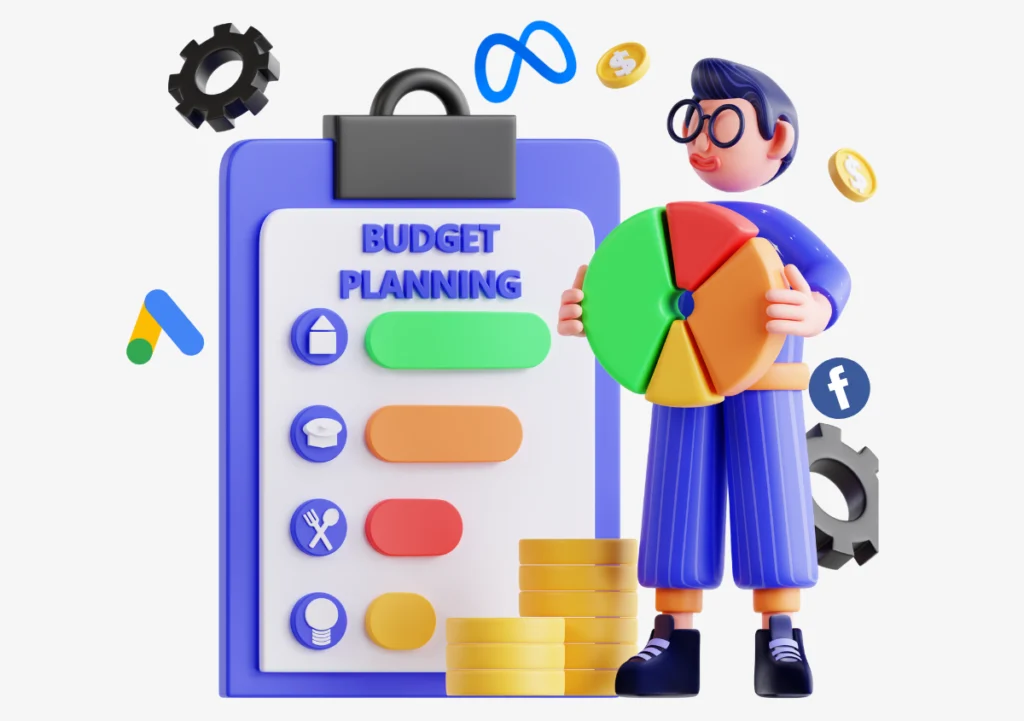
This budget must be set according to several factors, including the type of ad platform, the target audience, and campaign objectives. Moreover, the results of advertising campaigns can vary in cost between Google and Meta Ads. The campaign’s objectives determine how the budget must be spent on ads.
For example, if the aim is to increase brand awareness, the money should be spent on impressions. If the goal is to get more conversions, the dollars should be spent on clicks or conversions. It is also critical to check how much has been spent to ensure your campaign runs correctly. You should also monitor the amount spent on ads on a weekly or even daily basis.
8. Setting the Campaign Schedule
The campaign calendar must be based on the target audience and marketing goals. If, for example, the target demographic is more active on social media over the weekend, the campaign calendar would need to be changed. Note that the advertising platform will affect the campaign timetable.
You can use the budget scheduling tool in Meta Ads to schedule budget increases for their campaign or ad set budget. Using this feature will prevent you from being in a situation where the campaign is compromised or the expenses incurred are not well used. The duration of the campaign should also be considered.
How to Measure the Consideration Campaign’s Performance?
- Define Key Metrics: Identify captured metrics that reflect your campaign goals, including reach, engagement, Click-Through Rate, conversions, and ROI.
- Track Reach and Impressions: Measure the unique people who have viewed your ads, also known as reach, and how frequently your ads are served, referred to as impressions. This indicates how widely your campaign is being seen.
- Measure engagement: Analyze users’ interaction with the ads, including likes, comments, shares, and saves. High engagement describes how your ads resonate with users.
- Evaluate the CTR: This is the ratio of the people who saw your ad and clicked on it. The higher the CTR, the more compelling the ad is for users.
- Evaluate Conversion Metrics: Monitor how people have interacted with your ads, such as website visits, products bought, forms submitted, or downloaded apps. Use this information to calculate how profitable your campaigns have been and how far you have reached your targets.
- Review Audience Insights: Use analytics to see the demographics, interests, and behaviors of people who saw your ads. You can use this data to target who will see ads in the future, how to play them, how to better engage them, or how to involve similar audiences.
- Optimize Ad Creative: Use creative testing to detect which creative best suits your audience. Monitor performance and continuously enhance creatives.
- Monitor Ad Placement Performance: View how your commercials operate in the newsfeed, stories, or in-stream videos. Analyze which locations are driving more sales and conversions from your ads.
- Calculate ROAS: Look at the revenue generated by the ad compared to the ad spend. Assess the performance and success of your ad spend.
- Compare Performance over Time: Measure how your ads have performed over time, following patterns and variations. Modify your consideration campaigns based on their performance.
Read All Facebook Advertising Blogs Here.
Monitoring Critical Performance Measures
Understanding key performance indicators is crucial for determining the success of a consideration campaign. Key performance indicators are quantifiable metrics that help an ad decide whether or not its ad is successful.
- CTR – It measures how many people clicked on an ad compared to how many have seen it.
- CPC – It measures how much money is spent when users interact with an ad.
- Conversion Rate – This calculates what percentage of users click on the ad and do a conversion goal, such as submitting a form or purchasing.
- ROAS – Compares the revenue from the campaign to the cost of running it.
Analyzing and Presenting Findings via Reports
After tracking KPIs, you can assess and report on the outcomes. This would help you determine what worked and what did not in the campaign. Finally, you can report the outcomes to stakeholders. Analyzing the data is a way to evaluate the campaign’s efficiency by comparing KPIs to the goals.
For example, based on CTR, and CPC, you can tell if a campaign indeed increased website traffic, which was one of the goals. The outcome reporting is writing the campaign’s performance in a report. The record consists only of the tracked KPIs, the analysis results, and recommendations for future campaigns. To make it easy to understand the campaign’s efficiency, be brief and straight to the point. In conclusion, tracking KPIs, analyzing outcomes, and summarizing the campaign’s performance are essential in determining its effectiveness.
You need to prove, through tracking, whether the campaign met goals. Reporting the results helps you as a marketer justify a campaign’s efficiency to communities, and analyzing the data helps you identify what worked and what did not.
Read Also: Google Ads for Pool Cleaners: A Detailed Guide
Key Takeaway
The world of digital advertising is dynamic and subject to regular upgrades and modifications. Stay abreast of changes to policies, trends, and algorithms, and adjust your strategy and tactics accordingly.
Please note that the timescales provided are only suggestions. Adjust them according to your campaign’s goals, market developments, and the habits of your intended audience.
For strategic consideration campaign creation and management that deliver results within your ad budget, contact the Website Pandas team at support@websitepandas.com or 973-577-7213
Note: Read All Facebook Marketing Blogs Here.

